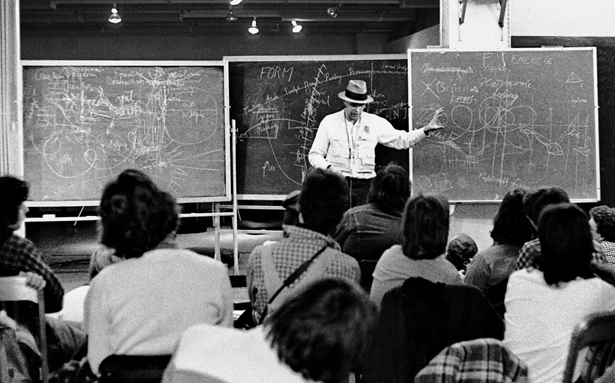Defining Creativity 22/01/20

When there is no ‘right answer’?
When people hear I work at an art college their usual response is: how do you mark work that is so subjective? When there is no ‘right answer’? I don’t think I’ve ever given a satisfactory answer to this so Rob Cowdroy and Anthony Williams’ paper on assessing creativity in the creative arts has been beneficial in helping break this conundrum into manageable and more objective chunks.
How to define creativity?
My own definition of creativity is when a person makes oblique links between disparate fragments of information and fuses them with their own personality in some way (personality may well be the way in which things join). However, before reading the article I hadn’t realised that this could potential bias the way in which I talk to students and consequentially how I mark their work. We have a standardised marking scheme but I feel definitions of creativity should be discussed in any benchmarking session, similar to how there is regular discussion of key term definitions, i.e., context, analysis etc. It’s not possible to tailor the mark scheme to each student’s type of creativity, therefore if this post were developed in more detail I would make the argument for a pass/fail system, instead of grades, based on this.
How to define creative ability?
In the paper Cowdroy and Williams define that creative ability was once defined using IQ (Sternberg 1988), and that this was later updated to include ‘intuitive form of creativity that could not be accommodated by IQ-based models’ (Sternberg and Davidson 1995; Sternberg 1999). While I agree that intuition is an important part of the creative process and can produce excellent results, IQ type intelligence and logic are vital in the next stage when post-rationalising. For a student of a creative subject to be both creator (intuition) and critic (IQ) is extremely specific to the university environment and in life beyond the academy these are roles performed by completely different types of people. Some practitioners simply make and it is for other people to decide what they mean. Why should such a student be marked on both when at university? How can a marking scheme be used to account for such problems?
When defining creative ability Cowdroy and Williams ignore the role of studio environment. In my teaching experience I have seen vast improvements in weaker students by encouraging them to engage in studio culture. The studio is a cloud of knowledge that benefits anyone who comes into contact with it and is beyond individual ability. It’s possible for a studio environment to have a good creative ability, to teach a good work ethic and skills without individual people needing to be guided by a teacher — it is a self ordering system if the correct infrastructure is put in place.
Memory Ingredients
The most interesting part of the paper was the discussion around how to distinguish different levels of creative ability. In this section the writers relate creativity to the different types of memory used at certain stages in the design process. The end of this chapter was dense and academic with references to Deleuze and Kant so I decided to simplify them for a general audience (I always try to write in this way):
- Emotional Memory is used during the concept development stage
- Visual Memory is used during the diagram, development and process stage
- The ability to memorise skills is used during the realisation stage
While I think these ingredients of memory are a good starting point to show students what could potentially go into a project they still show the futility of defining creativity. It did, however, make me realise that perhaps if a student has mental health issues (especially those pertaining to ’emotional memory’ at the concept stage) then perhaps this could be considered in the marking criteria. Also, if a student has a history of mental health issues should they be allowed to skip to concept stage so as not to exasperate their illness? And perhaps the same could be said for certain types of trauma and visual memory.
